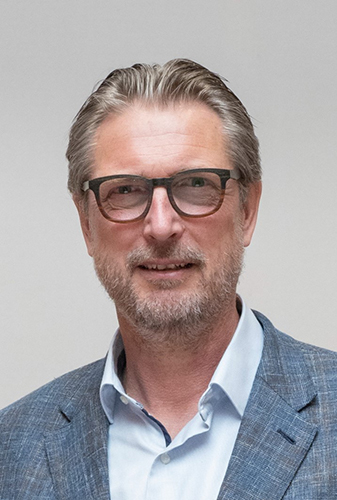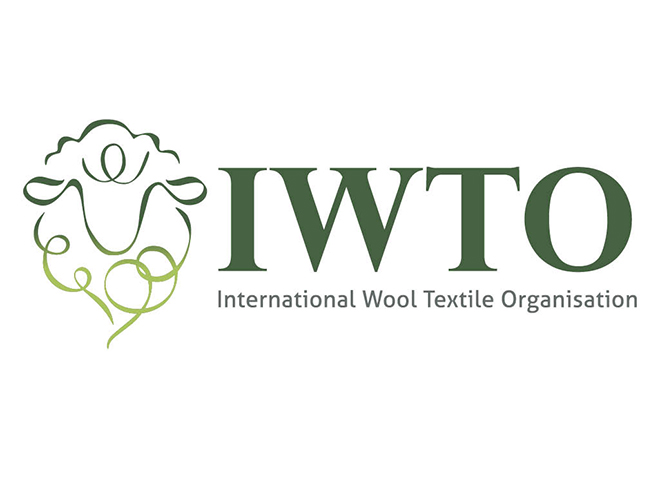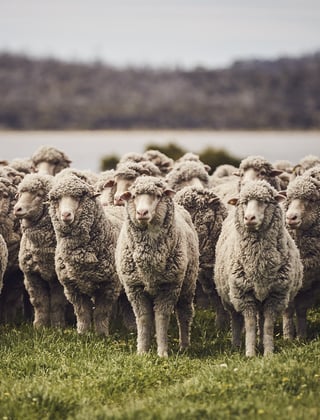IWTO President: wool’s role in sustainability

Klaus Steger was elected President of International Wool Textile Organisation (IWTO) in May. In this interview for Beyond the Bale, Mr Steger outlines the challenges and opportunities for the wool industry in promoting wool as a sustainable fibre.

IWTO President, Klaus Steger.
What is the foremost challenge that the global wool industry faces over the next few years?
Wool products risk receiving ‘D’ or ‘red light’ type labels for environmental impact, if we do not work now to counteract the issues in measuring sustainability. European Union (EU) textile legislation is currently being developed which could lead to a situation in which consumers will be told that synthetic, fossil fuel-based fibres are good for the environment, and natural fibres are not.
This textile legislation, and the measurement assessment underpinning it, is a global first and is driven by the EU’s well-intentioned desire to put fast fashion out of fashion. It is due to be finalised in 2025. Other countries often follow what the EU puts in place, to continue trading within the common market. So what happens in Europe could well spill over elsewhere, in the near future.
How are the natural fibre industries addressing these regulatory challenges in the EU?
The Make the Label Count (MTLC) coalition, whose founding members include AWI alongside IWTO and other global natural fibre organisations, is tackling the measurement methodology that underpins the developing sustainability legislation in the EU. This methodology, the Product Environmental Footprint (PEF), is flawed and disadvantages natural fibres, and MTLC is working to improve this with lawmakers in the European Commission, European Parliament, European Council and with representatives of EU member states.
Lawmakers are under pressure to make major changes, and without the messages from MTLC, they will only hear what the big retail, chemical, and plastics lobbies want them to hear. As you can imagine, all of these are incredibly well-funded and powerful, and have no concern for wool or any other natural fibre.
What problems do synthetic textiles create in the environment?
The world is awash in microplastic pollution, directly related to synthetic textiles. Landfills are filling with unsold and second-hand clothing – the vast majority of which is cheap synthetics. Most of this is shipped outside of Europe into India or African countries, the equivalent of sweeping it under the rug. Microplastic pollution threatens marine life, and has been linked to the potential for human health risks such as lung inflammation, metabolic disturbance, endocrine disruption, and brain development.
Wool offers a natural, proven biodegradable alternative to synthetics.
How important is it that the wool industry markets its eco-credentials?
It is absolutely vital to ensure a sustainable future for all parts of the wool pipeline, from farm to retail floor.
A key part of this is counteracting the negative perceptions surrounding agriculture and livestock. Today’s largely urban consumers will rarely if ever set foot on a farm. On the contrary, they hear many negative stories about ‘industrial farming’, the negative impacts of fertilisers, the loss of bees. Yet sheep farms can, among other things, store carbon, provide a renewable raw material for clothing and other natural textiles, and increase biodiversity. Not to mention that sheep may also provide meat and milk.
Consumers are at the front line of change. As with the slow food movement, once consumers are more aware of the benefits of wool and the consequences of choosing synthetic textiles, the shift back to natural will gain more traction.
What challenges and opportunities are there for wool industry marketing?
Wool is up against massive marketing budgets, delivering an avalanche of very well constructed messages to people – even those within the fashion and textile industry – who don’t want to understand the fundamental differences between mined and farmed products.
Wool marketing needs to leverage its inherent ‘natural, sustainable’ messages – often brands without an ounce of wool use pastoral imagery, even with sheep, in their marketing. Or, as the recent Woolmark Filter by Fabric campaign points out, they use terms that bring to mind natural fibres (‘silky’, ‘fleece’, etc). There can only be one reason for this – because natural sells. That is why the work to reconnect farms with nature is so important.
Every actor in the wool supply chain has a role to play in promoting wool – starting with the woolgrower measuring and promoting their environmental credentials. Wool must punch above its 1% market share to get its messages heard. The Woolmark Company is leading the charge for the wool industry globally with its marketing efforts. We need everyone involved with wool to engage wherever possible.
What role does IWTO have in addressing these challenges and opportunities?
As an industry body, IWTO is uniquely positioned: it is the only organisation representing the global wool industry, and the only organisation representing any natural fibre at the global level.
IWTO began to do its homework on wool sustainability 10+ years ago, when the issue first became apparent. This work is now paying off: thanks to the diligence of IWTO members, including substantial support and investment by AWI, the wool industry has a catalogue of scientific evidence in support of wool’s sustainability – and more to come. The science alone, however, does nothing on its own: it must be brought to the attention of policymakers, legislators, and other stakeholders. This is very likely the most important task IWTO has faced in its 93 years.
IWTO is firmly committed to supporting marketing partners like The Woolmark Company and the Campaign for Wool and amplifying their marketing efforts to business and consumers. IWTO will continue to back the Make the Label Count campaign to improve PEF and ensure just regulations for natural fibres.
Mr Steger is also Chief Executive Officer for Hoftex Group AG, and Chief Executive Officer of ERWO Holding AG, owner of Südwolle Group GmbH. IWTO elects a new President every two years.

More information:
www.iwto.org
www.makethelabelcount.org
This article appeared in the December 2023 edition of AWI’s Beyond the Bale magazine. Reproduction of the article is encouraged.














